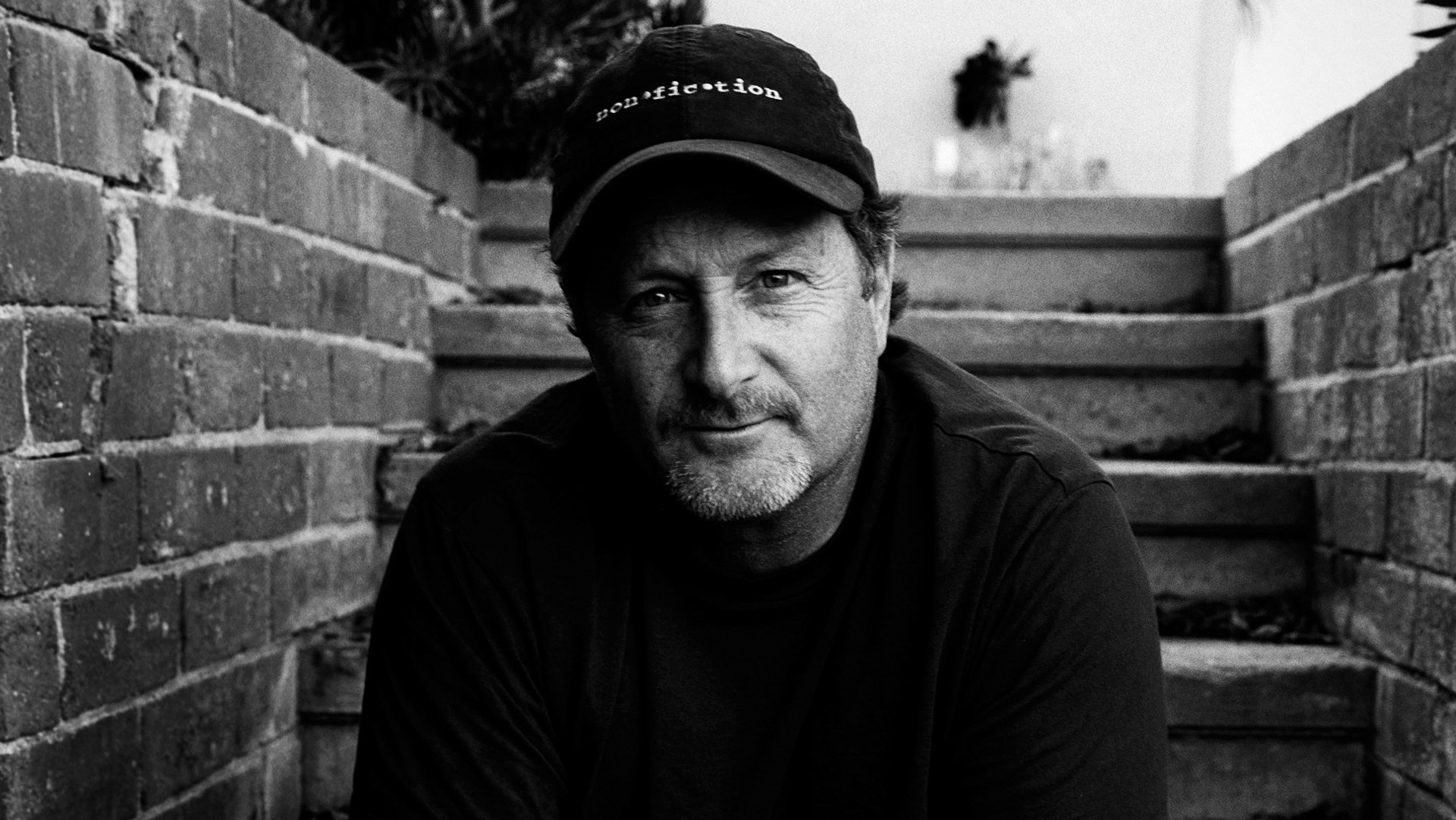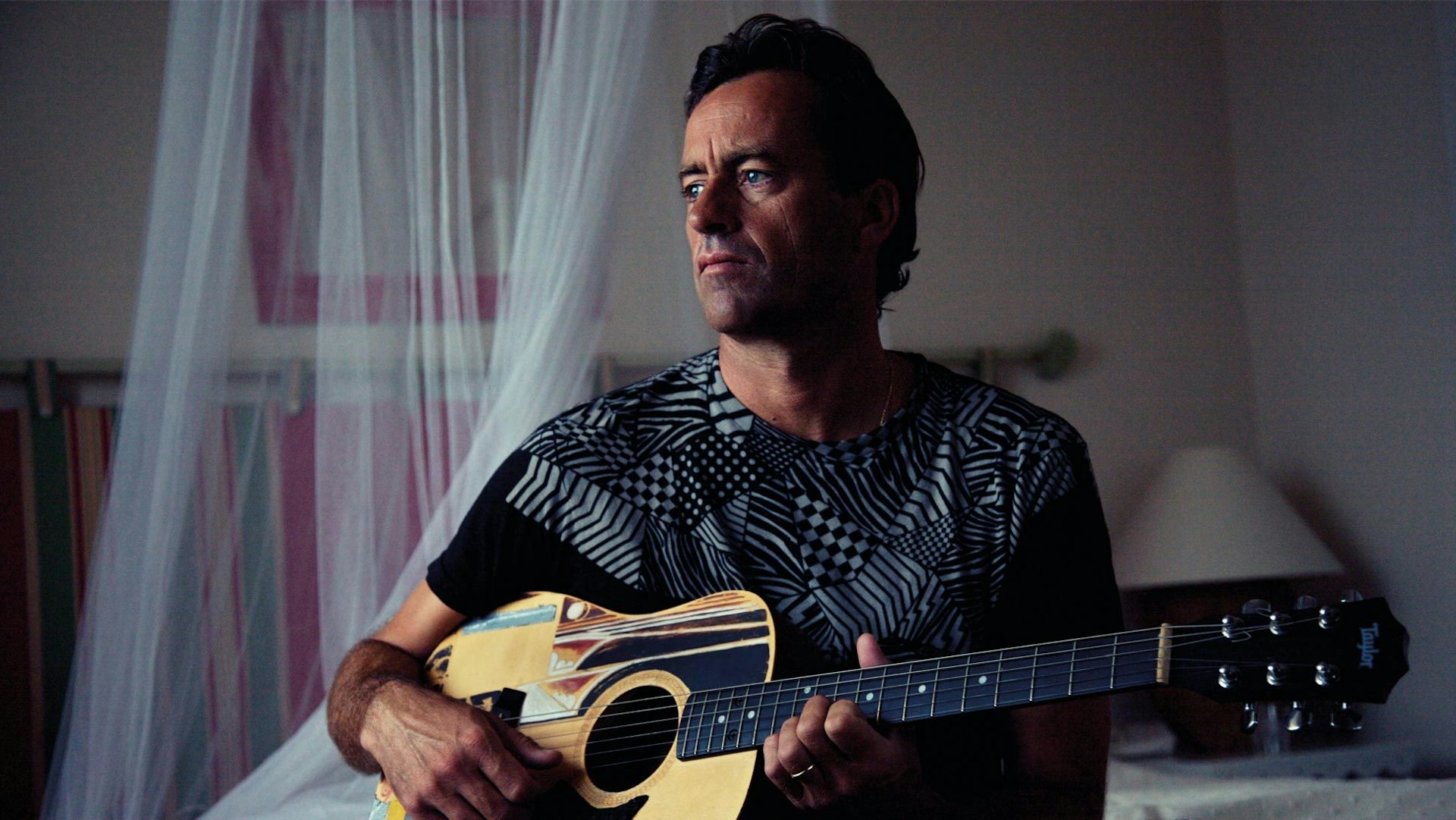
Stacy Peralta
- Text by Jay Riggio
- Photography by Nate Bressler
Success came early to Stacy Peralta. The young Californian turned pro at age eleven, started what would become one of the biggest skateboard companies in the world at nineteen, and went on to assemble a team of riders who revolutionised skating as a whole, the seminal Bones Brigade. Then, without explanation or warning, he walked away from it all.
In 1992, Stacy left Powell Peralta and skateboarding altogether to launch a whole new career. After making two highly successful documentaries – Dogtown and Z-Boys and Riding Giants – as well as the mainstream hit Lords of Dogtown, which he wrote the screenplay for, Peralta is now back in the spotlight. His newest documentary, Made in America, set to release at the end of summer, focuses on the elaborate Crips and Bloods gang lineage throughout the greater South Los Angeles areas.
The process was a long, dangerous and incredibly brave journey on the part of Peralta, as he slowly befriended violent gang members from opposing sides. The following interview is a well-defined snail trail of inspiration left by a man who has made a career out of following his heart.
What’s your take on the current state of skateboarding?
Stacy Peralta: The one thing that excites me about skateboarding these days, and it really excites me, is the ethnic make-up of what a skateboarder is today. When I was growing up, a skateboarder was pretty much a surfer: white skin, blond hair, blue eyes. And that made up ninety-nine per cent of skateboarders. Nowadays, it’s become very urban and inner city. You’re seeing so many black kids and Mexican kids. In South LA, in the hood, if you ride a skateboard, that’s a pass, which means gangs won’t mess with you. And that to me is mind-blowing.
Really? What do you attribute that to?
Well, because they don’t know how to view these kids. They definitely know they’re not fighters, they’re doing something else. They leave them alone. They also think it’s cool. And also what’s beautiful about that is, those kids are the ones that have the least access to anything. But the one thing they have access to is concrete. It’s everywhere; a skateboard is not that expensive. So it’s saving their lives, it really is. To me they have defined what skateboarding really is. They are the true outcasts. We all started as outcasts, but those kids are the true outcasts. It’s this thing that we discovered, and these kids have taken it and helped define it. And they’ve also kept it beautifully illegal. It’s got to stay illegal.
Why do you say that?
Because it keeps it honest. It keeps kids searching.
Your new film, Made In America, deals with some gnarly stuff. Where did your interest in gang culture come from and why make a film about it?
Los Angeles is the epicentre of modern gang culture. In the twenties it was Chicago with Al Capone, but that was a whole different type of gangster. Nowadays it’s the Crips and Bloods out of South LA. This gang problem has persisted over the past forty years, four decades. In my high school in Venice, we had gang problems. The week we started shooting Made In America, a kid was shot and killed at my former high school. The reason I made this film is, I’ve known about this problem all my life as a Los Angeles resident and I asked myself the question one day, ‘If white kids were forming gangs and arming themselves with automatic assault rifles, would the government allow it to stand. Would the government allow it for four decades?’ And the answer I came up with is, ‘No, they wouldn’t.’ And why is it that when African-American kids do it, it goes on for four decades and all they do is throw police at it? I wanted to find out if there was a human face behind this, if there was something that caused this problem to happen. So that was a germ seed for this film.
How did you go about talking to gang members?
The gang territory is a huge area, it’s a city unto itself with hundreds of neighbourhoods. And each neighbourhood exists as if it is a rival state, with its own history, its own folklore, its own historical figures and it’s either a Blood neighbourhood or a Crip neighbourhood. Each neighbourhood has what would be called a shot-caller or a Tony Soprano-type character. And my job was to go in there and find that Soprano-like character, get to know him, explain who I was, and say what my goal is, and what my intentions were. And once I did that I was able to build trust with these guys and they would then take me into their neighbourhoods and introduce me to various gang members who I wanted to put on film.
That sounds insanely dangerous.
Well, it was, but if you do it the right way it’s okay and if you’re respectful to them… They told me that a lot of people from Hollywood go in there all the time and all they want to do is film violence. Film the bad stuff and then disappear. I told them from day one that that’s not what I’m interested in. I want to know why this is going on, I want to know what these kids think, I want to know if they want something else in their life. I want to know if they want their children or their brothers or sisters to be doing this. So once they realised that I was for real and that I was also an LA resident, we became friends.
Did you notice any similarities between skateboarders and surfers that may exist in the mindset of some of these gang members?
[Long pause] The similarities are a love of their own culture and the importance of identity. You know, when you’re a skateboarder that becomes part of your identity and that identity becomes who you are, it becomes where you get your direction in life and it’s the same with being a gang member. The colour you wear, the street you come from… it’s your heritage, it’s your DNA. The only difference is, economically these kids are hit in such a horrifying way. Almost all of them come from broken families, so many of their uncles and fathers are in jail or dead. In that regard, they are such outcasts that many of them see no way back. Well, at least with skateboarders and surfers, as much as they feel like outcasts, they still have an opportunity to become part of society and they do experience the good things about society. The ultimate thing I discovered in this movie is, these aren’t African-American kids, these are American kids. They’re born on American soil, but somehow they’re not looked at as Americans. They’re Americans, man, and this is what happened to them because of the obstacles set in their way.
So as far as your legacy is concerned, how do you want to be remembered: pro skater, industry icon or documentarian?
That’s a hard question. I guess as somebody who followed their interests… with a skateboard in one hand and a camera in the other.
